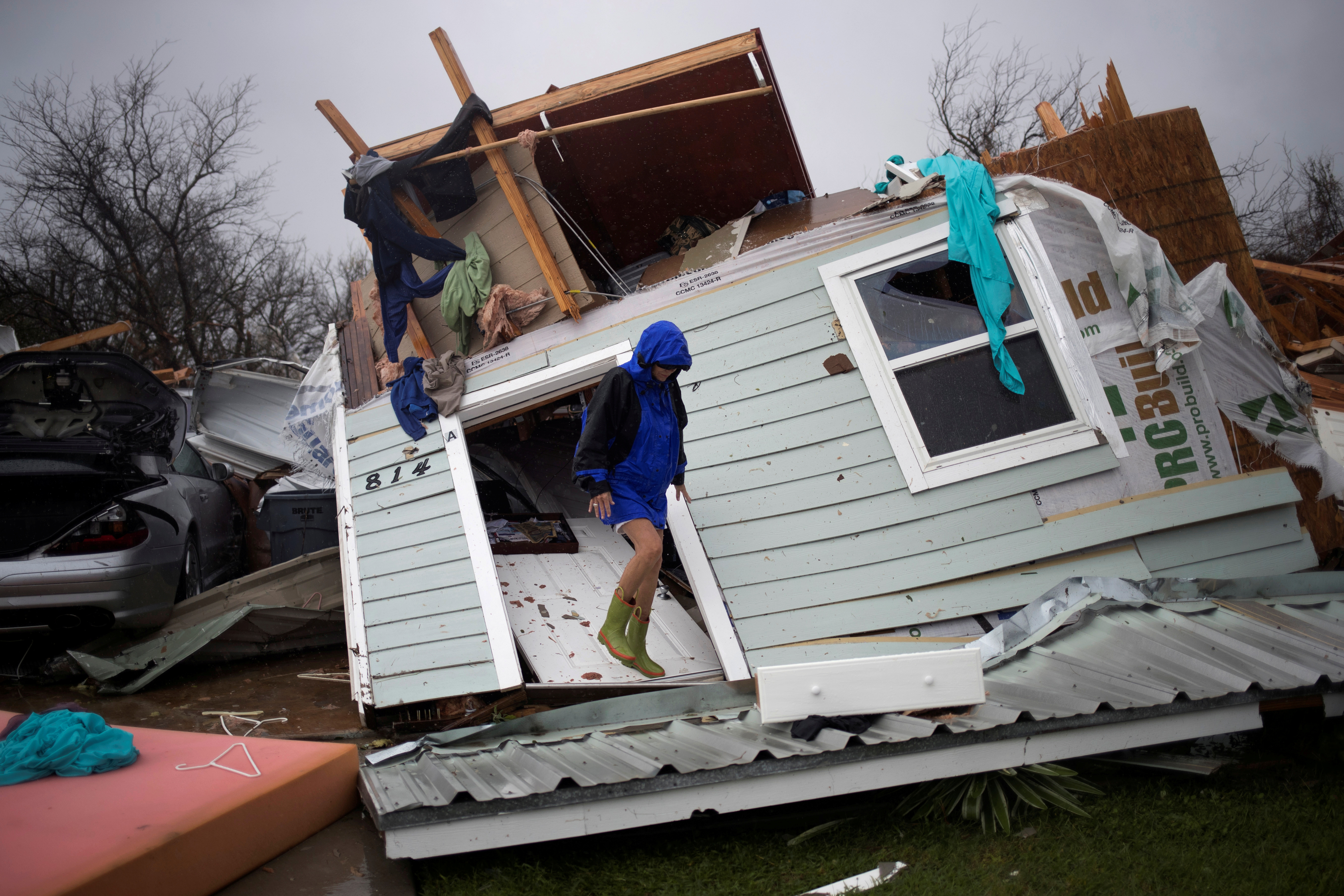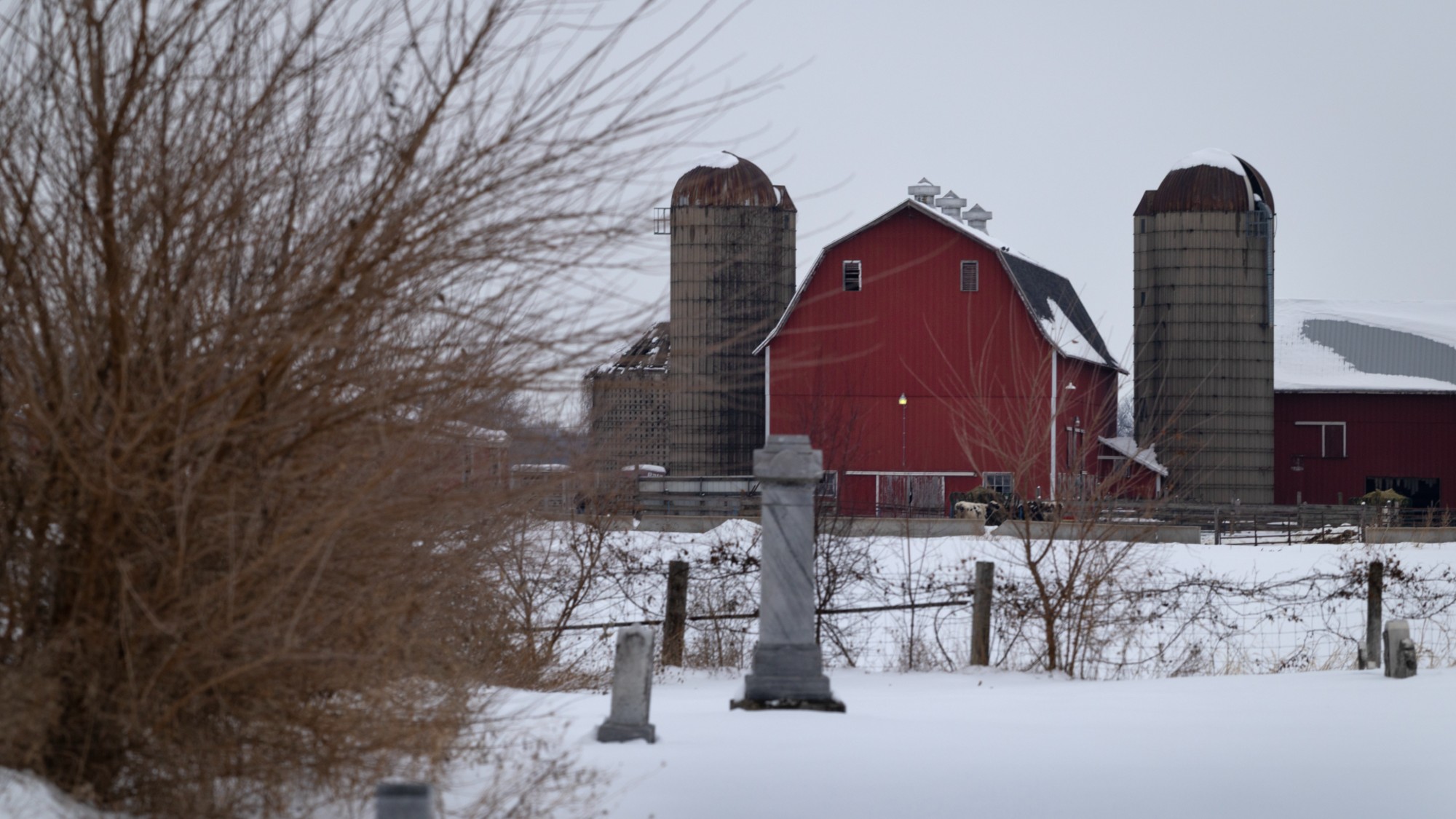Hurricane Harvey is America's climate future
We're twiddling our thumbs while an enormous threat gathers


Hurricane Harvey pummeled southern Texas all weekend, causing apocalyptic flooding. Worse, several more days of torrential rainfall are in the cards, as Harvey is predicted to slowly wander slightly back out to sea and then make landfall again in a day or two. Several deaths have already been confirmed, and forecasters estimate there will be up to 50 inches of rain in the worst-hit areas.
This destruction is a window into the future of climate change. This is what happens when humanity fails to either meaningfully restrict greenhouse gas emissions or prepare for the damage that is certainly coming.
Now, before the inevitable pedant brigade pounces in, that doesn't mean Harvey was definitely caused by climate change. Global temperatures have only markedly increased for a few decades, and extreme weather events are rare and random by definition. It will take many more years for enough data to be collected to be able to establish causality.
The Week
Escape your echo chamber. Get the facts behind the news, plus analysis from multiple perspectives.

Sign up for The Week's Free Newsletters
From our morning news briefing to a weekly Good News Newsletter, get the best of The Week delivered directly to your inbox.
From our morning news briefing to a weekly Good News Newsletter, get the best of The Week delivered directly to your inbox.
But what we can say is that climate science predicts with high confidence that increased temperatures will increase the likelihood of extreme weather.
It will make hurricanes that do form stronger. It may also increase the number of hurricanes, though that's harder to predict with certainty. It's also besides the point. A storm doesn't need to qualify as a hurricane to pose many of the same dangers. Simple big storms can still have high winds, tornadoes, and especially flooding, which is the major danger along the Gulf Coast.
And when it comes to attributing an increased flooding trend directly to climate change, we are on firmer ground (so to speak). As the 2014 Intergovernmental Panel on Climate Change report notes, models predict that increasing temperature ought to cause greater precipitation extremes in both directions — both drought and flooding, though there are likely more areas of heavy precipitation. As climate scientist Michael Mann writes, "Harvey was almost certainly more intense than it would have been in the absence of human-caused warming."
All that is seriously worsened by abysmal American preparedness — particularly in the South, where drainage and other flood protection infrastructure is often designed poorly and maintained worse. Southern Texas is notorious in this respect — not as bad as New Orleans, which still has not been completely rebuilt from Hurricane Katrina — but still bad. As this ProPublica/Texas Tribune report details, Houston has been increasing its vulnerability to flooding, mainly through ever-sprawling development. Prairie absorbs water to some extent, while concrete and pavement sheds it quickly. Paving over soil therefore increases the speed and volume of runoff, and hence flooding. (Naturally, the Republican head of the local flood control district denies this is happening and has no plans to study how climate change might affect the local region.)
A free daily email with the biggest news stories of the day – and the best features from TheWeek.com
Furthermore, the Houston area also has some critical infrastructure that is seriously vulnerable to a direct hit from a major hurricane — like the Johnson Space Center and the Houston Ship Channel, which has the largest oil refinery complex in the entire country. At the time of writing, the Johnson center is closed but operational, while refineries with about one million barrels of daily capacity have been shut down — with more to come, most likely.
Houston has been hit with a 100-year flood — a rainstorm that, going by previous records, has a 1 percent chance of happening in one year — in 2015 and in 2016. Now in 2017 it's enduring what will probably be the worst flood in the city's history. (That, plus the suggestive science on climate change precipitation, would suggest the probabilities need to be updated.)
And that brings me to President Trump. It's not clear how the disaster response is going, though I would certainly not expect top-notch performance. But just days before Harvey hit, Trump announced that he was going to rescind an Obama executive order that would require buildings receiving federal funding to consider climate change and build above extreme flood levels. Since there is a big federal program to provide flood insurance to many such buildings (that is incidentally nearly bankrupt due to massive claims of late), this amounts to a government subsidy to build in flood-prone areas.
That's Trump alright: stupendous, almost unimaginable idiocy in every situation. But here it drives home the fact that failing to act on climate change is putting the United States under direct threat of physical devastation. If ISIS had some plot to blow up the nation's biggest oil refinery, it would be instant justification for limitless spending and endless war. But because the threat comes through abstract and slow-moving scientific processes — and because one of our two political parties has become intellectually unhinged — we sit here, twiddling our thumbs, until the disaster is on us.
Well, it's here now — and the longer we wait, the more expensive and deadly prevention and defense will be. It's time to get moving.
Ryan Cooper is a national correspondent at TheWeek.com. His work has appeared in the Washington Monthly, The New Republic, and the Washington Post.
-
 Will Trump’s $12 billion bailout solve the farm crisis?
Will Trump’s $12 billion bailout solve the farm crisis?Today’s Big Question Agriculture sector says it wants trade, not aid
-
 ‘City leaders must recognize its residents as part of its lifeblood’
‘City leaders must recognize its residents as part of its lifeblood’Instant Opinion Opinion, comment and editorials of the day
-
 10 upcoming albums to stream during the winter chill
10 upcoming albums to stream during the winter chillThe Week Recommends As the calendar turns to 2026, check out some new music from your favorite artists
-
 Has Zohran Mamdani shown the Democrats how to win again?
Has Zohran Mamdani shown the Democrats how to win again?Today’s Big Question New York City mayoral election touted as victory for left-wing populists but moderate centrist wins elsewhere present more complex path for Democratic Party
-
 Millions turn out for anti-Trump ‘No Kings’ rallies
Millions turn out for anti-Trump ‘No Kings’ ralliesSpeed Read An estimated 7 million people participated, 2 million more than at the first ‘No Kings’ protest in June
-
 Ghislaine Maxwell: angling for a Trump pardon
Ghislaine Maxwell: angling for a Trump pardonTalking Point Convicted sex trafficker's testimony could shed new light on president's links to Jeffrey Epstein
-
 The last words and final moments of 40 presidents
The last words and final moments of 40 presidentsThe Explainer Some are eloquent quotes worthy of the holders of the highest office in the nation, and others... aren't
-
 The JFK files: the truth at last?
The JFK files: the truth at last?In The Spotlight More than 64,000 previously classified documents relating the 1963 assassination of John F. Kennedy have been released by the Trump administration
-
 'Seriously, not literally': how should the world take Donald Trump?
'Seriously, not literally': how should the world take Donald Trump?Today's big question White House rhetoric and reality look likely to become increasingly blurred
-
 Will Trump's 'madman' strategy pay off?
Will Trump's 'madman' strategy pay off?Today's Big Question Incoming US president likes to seem unpredictable but, this time round, world leaders could be wise to his playbook
-
 Democrats vs. Republicans: who are US billionaires backing?
Democrats vs. Republicans: who are US billionaires backing?The Explainer Younger tech titans join 'boys' club throwing money and support' behind President Trump, while older plutocrats quietly rebuke new administration
